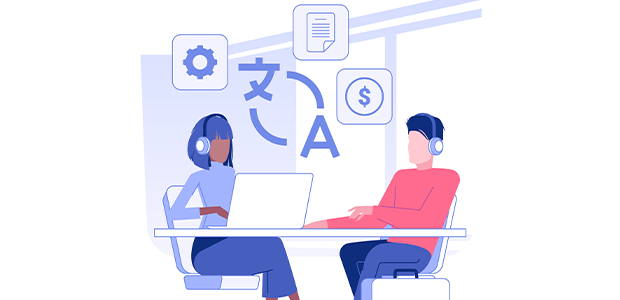
Positively disruptive: The technology breaking down language barriers for professionals
For the modern-day worker, the world should – in theory – be an open playing field of adventure and ambition. But in practice, regardless of how appealing it might sound, it is not always feasible to pack up your belongings, relocate to a new country, and begin your job with zero issues in terms of workplace socialising, engagement and administration.
The sad reality for many is that even though they are as qualified as their counterparts – or in many cases, more so – language barriers are often an early roadblock, immediately cutting them off from progressing, and stripping away a crucial aspect to successful relocation.
Language and cultural differences should never be an obstacle in securing a job that’s right for you, and in today’s world, with technology as advanced as it is, there is absolutely no need for this to be the case. For far too long, language barriers have been a real thorn in the side of global HR and communications teams, with organisations finding it increasingly difficult to appeal to a diverse range of applicants, as well as struggling with in-house promotion and talent retention. The good news is that we are in an era of spell-binding technological achievement, and there are a number of clever innovations that can turn the tide for HR and communications professionals, in their battle to break down pesky language barriers in the workplace.
Machine Learning and AI
When we think about the concept of machine learning and AI, many of us dream up fantastical images of sentient robots and futuristic machines running our lives. While that is certainly not the case – at least not yet – machine learning and AI have almost limitless potential to improve our lives, and in particular the lives of frontline workers who are arguably the most affected by seemingly insurmountable language barriers in the workplace. The reality is that the digital revolution needs to extend to the deskless workers who kept the world running during the pandemic. Once it is grounded by a sturdy foundation of corporate digitalisation, AI and machine learning functions, will make everything, such as emails, documentation and networking, an easily navigated and accessible experience.
Cross Cultural Training Tools
Cross-cultural training tools are an important part of the conversation happening among HR and communications professionals now. In every work environment, it is imperative to treat each employee with respect and understanding, regardless of cultural background and language. However, the way in which employees – particularly those on the frontline – are ignored, often due to an inability to effectively communicate, is largely going unnoticed. Easily integrated via third-party apps like Flip, cross-cultural training tools, with their translation and educational features, empower non-native speakers in the workplace to reach their full potential. They also serve as a foundation upon which HR and communications departments can engage with international employees seamlessly and professionally, whilst acknowledging certain cultural differences, nuances and expectations.
Video conferencing with real-time translation
Advancements in global video conferencing and call capabilities largely grew out of the hybrid and remote working models mandated by the pandemic. Computer-based employees got to experience a positive shift in the work/life balance that prioritised flexibility and productivity. Frontline workers, however – the group that arguably kept the world spinning in those early lockdown days – were left out of the conversation, with little or no change in how they lived and worked. Now, it is fair to say that due to the nature of frontline work, deskless employees have no option but to engage with corporations and clientele differently, but there is certainly room for technologies that would enable cross-departmental communication without the need for in-person or analogue processes. For example, an integrated video conferencing app with real time translation features would enable frontline workers to reach out to peers on work-related matters, quickly and efficiently, reducing the risk of miscommunication and avoidable errors. With many corporations existing primarily online these days, deskless workers need to be brought into this digital era of communication, collaboration and connectivity.
Collaboration tools
A recent report found that on average we spend almost a third of our lives working. For that reason, work-based friendships, collaboration, and networking, can be a crucial part of an employee's experience, often leading to promotion and wide-spread productivity gains. For non-native speakers, it can be an isolating experience to work on the ground floor in a company, without the ability to fully engage with co-workers. Additionally, the separation from larger company processes and networking opportunities can result in a failure to progress through the company at the same rate as similarly qualified employees, who don’t meet the same obstacles around language skills.
HR and communications teams can find that they are struggling to appropriately communicate changes in the work environment, or may even have difficulty mitigating workplace disputes. This is where integrative collaboration tools, with live translation features, have the potential to revolutionise networking and team work, for both the employee and HR and communications. They also prevent workplace silos, whereby different departments within a business don’t communicate with each other, decreasing knowledge sharing and working against a cohesive atmosphere.
To summarise, the corporate world and technology clashed when the effects of the pandemic had a widespread, global impact. From that collision came a sense of something new and exciting. Pre-existing working models were torn down and workers were given a new lease on life that allowed for flexibility and increased collaboration. Now, we are echoing the digital revolution of the blue-collar sector and the technologies that will enable them to break down the barriers of language and communication.

